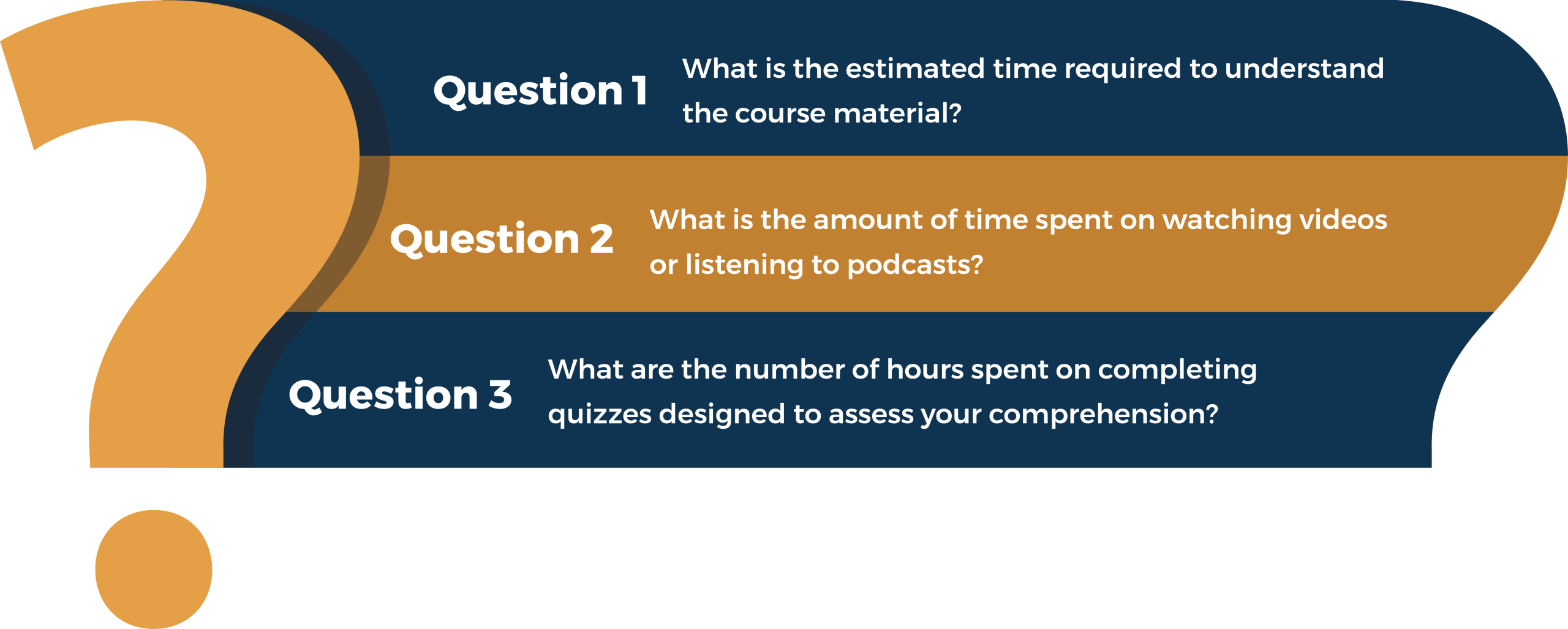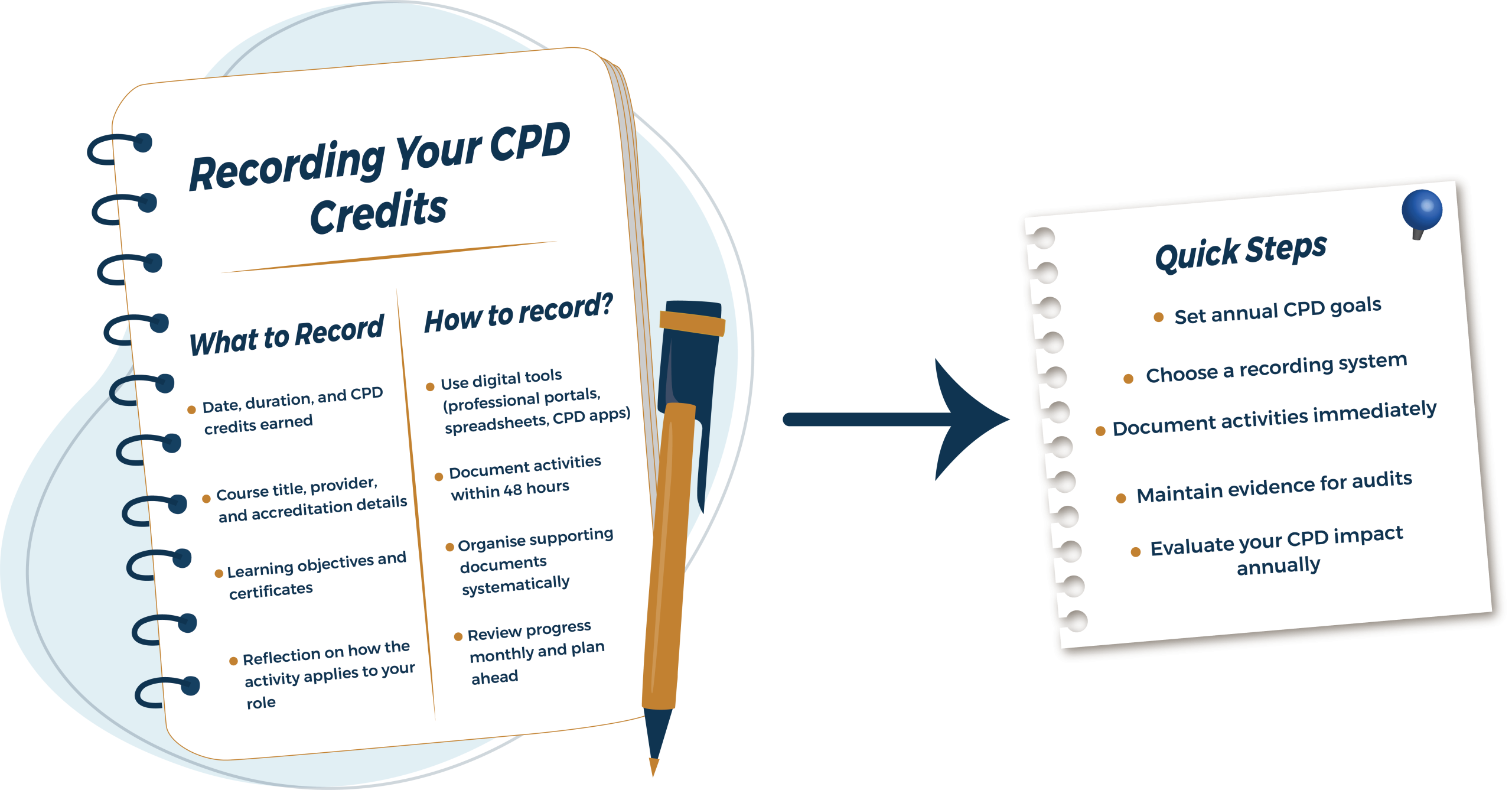Continuous Professional Development (CPD) is not just a box to tick; it’s an ongoing commitment to enhancing your skills and knowledge. One of the key components of CPD is earning CPD credits, also known as CPD points. Lately, to ensure that teachers continually improve their skills and stay current with educational developments, the General Teaching Council for England (GTCE) has established Continuing Professional Development (CPD) requirements. Teachers are typically required to complete a specific number of CPD hours or points over a set period, often a school year. For example, a primary school teacher might be expected to gather 30 CPD hours annually, while a secondary school teacher might need to earn 40 CPD hours. Similar to this, professional bodies, trainers, employers and clients are now more vigilant in focusing on the CPD credits alongside the expertise. This article will explain what CPD credits or points are, why they matter, and how they can benefit your career.
Key Takeaways
- CPD points represent active learning hours and provide a measurable way to track professional development.
- Credits matter for compliance, growth, and credibility, helping professionals stay current and progress in their careers.
- Maintaining a CPD log is essential to record, reflect, and demonstrate learning for audits, licences, or recognition.
- CPD is not a one-time achievement but an ongoing commitment. To stay compliant and professionally credible, you need to keep recording new learning activities regularly.
Understanding CPD Credits, Points, and Hours
‘What are CPD points, units, or credits?’ and ‘How do CPD points relate to CPD hours?’ are probably two of the most frequently asked questions. And the simplest answer would be that CPD credits, units, hours, and points are all the same thing.
Regardless of how they are named differently, CPD credits, or CPD points, are basically a measurement unit used to quantify the learning and development activities you undertake as part of your professional growth. These activities can encompass a wide range of experiences, including workshops, courses, seminars, conferences, webinars, and self-directed learning. CPD credits provide a structured way to track and demonstrate your commitment to ongoing learning.
Why do CPD Credits matter?
Continuing Professional Development (CPD) credits matter because they provide significant benefits to professionals, employers, and the wider community. Here are the key reasons why they matter:
- Evidence of Professional Competence: CPD credits provide measurable evidence of your commitment to growth. It also demonstrates that you are actively maintaining and updating your skills, ensuring your knowledge and skills stay relevant in a fast-changing world.
- Career Advancement Opportunities: Accumulated credits reflect commitment to growth, strengthening your CV, supporting promotions, and boosting employability in competitive industries.
- Regulatory Compliance: Many professions and regulatory bodies require a certain number of CPD hours or credits annually to maintain membership, registration, or certification.
- Personal Growth and Professional Networking: Earning CPD credits goes beyond compliance; they nurture personal development, build confidence in professional capabilities, and equip you to adapt to change. They create opportunities to connect with peers and experts, building valuable professional networks.
How to earn CPD Credits?
Earning CPD points or credits involves various activities, and the specific requirements may vary depending on your profession and location. You can earn CPD credits through the following most common activities:
- Workshops and Conferences: Participating in relevant industry events can earn you a good amount of CPD credits. These events often provide valuable networking opportunities as well.
- Online courses: Endorsed or accredited online courses or webinars are a convenient way to earn CPD credits, especially if you have a busy schedule.
- Self-Directed learning: Reading books, research papers, or articles related to your field and documenting your learning can also count towards CPD credits.
- Mentorship: Mentoring a colleague, being guided by a senior professional, or attending structured mentorship programmes can all contribute valuable credits to your CPD record.
How to Calculate CPD Credits?
The amount of time invested in an activity is the primary factor that determines the number of continuing professional development (CPD) credits or points that you have gathered from an activity. Let’s say a classroom course is five hours long and you have successfully completed it; you will be awarded five CPD credits or five CPD points.
The Fundamental Principle
Most systems operate on a 1:1 ratio where 1 CPD credit equals 1 hour of active learning time. However, this can vary significantly depending on your profession and governing body.
CPD Points/CPD Credits = Total number of active learning hours in a CPD activity
It is important to know that these credit hours are dependent entirely on the amount of time spent actively learning. Even if the lengths of the courses varied, they might nevertheless provide the same number of CPD credits.
Example:
A two-day workshop consisting of 6 hours each day = 12 CPD points.
A 12-week training programme with 1 hour per week = 12 CPD points.
Fact: Learners participated in learning activities for a combined total of 12 hours across both scenarios, each CPD will be awarded a value of 12 CPD credits.
However, for self-paced courses and online sessions, it gets a bit complicated. But generally, the following elements are considered when establishing CPD points for online training sessions or courses:

This perfectly leads to the very next question.
How do I Find the CPD Credits for a Course?
The process for determining how many CPD points or credits a course provides may differ based on your expertise, your career, and the organisation or certifying body in charge of CPD requirements. Most certified courses will be assigned a certain number of CPD points.
You can begin by reviewing the course specifics offered by the training provider to see how many points a course offers. These points are usually made clear on their website or in course materials. If you cannot find this information online, you should contact the course provider directly for clarification.
If you attend in-person training, the CPD points are normally calculated depending on the amount of active learning time you spend during the event, which will be communicated to you ahead of time. Remember not to assume the number of points because it may vary due to break times and post-training responsibilities.
How to Record your CPD Credits?
A CPD Journal or CPD log is the way to keep a complete record of all the CPD points or credits acquired over a year, including all the important details of the CPD activities performed. It is also commonly known as a CPD Portfolio or a CPD Record. In most professional organisations, the CPD Journals of members are reviewed on a regular basis to ensure that members are in compliance with yearly CPD credits or CPD points requirements. To ensure you receive proper recognition for your CPD efforts, it’s extremely important to keep a meticulous record of all your CPD activities. Here’s how to do it effectively:
- Establish explicit CPD goals and objectives to drive your professional development activities. Investing time in making a good CPD Plan at this stage goes a long way.
- Make sure that you write everything down. Keep a complete record of every CPD activity you participate in. Include all the details, such as dates of the CPD activity, topics, total time of active learning, a description or objective, methods, tools, or resources and any certificates or proof of completion.
- Always stay organised on your CPD journey. Track your progress using digital tools or spreadsheets to ensure you complete any CPD criteria established by your professional organisation.
- Review and reflect on your CPD activities on a regular basis to assess their relevance and how they contribute to your professional growth.
- It is also helpful to have a mentor or a senior professional in your industry help you sort your CPD record and provide further specific and expert recommendations to improve your learning.
An organised and well-presented CPD record not only supports compliance but also strengthens your career prospects. A consistent approach to recording CPD activities demonstrates professionalism, enhances employability, and can accelerate career progression. By maintaining a structured CPD portfolio, you create a clear reflection of your development journey and a powerful source of motivation to achieve your goals.

Learn more about Maintaining a CPD Log
Conclusion
It is important to realise that the CPD credits or CPD points are more than just a plain, systematic requirement; they are a valuable tool for your professional growth. And by actively seeking out opportunities to learn and earn CPD credits, you are not only staying up-to-date in your field but also demonstrating that you are dedicated to excellence to employers, clients, and licencing bodies. So, make your CPD journey a meaningful part of your career.
Frequently Asked Question
Yes, if it's structured, documented, and relevant to your profession. Many bodies require reflection essays or application plans.
Not all, but many regulated professions require CPD to maintain licences or membership.
By maintaining a CPD journal with certificates, records, and reflections.
Consequences range from warnings to license suspension or membership termination. Contact your professional body early if you're falling behind.
Generally, yes, if it's relevant to your professional development and meets the regulatory standards for structured learning with documented outcomes.
Some activities may count toward multiple memberships, but requirements vary. Maintain separate records and verify overlap policies with each organisation.
Not exactly, but most regulators only recognise CPD earned within a set timeframe (usually 12–36 months).
For example:
- A regulatory body may require you to complete 20 CPD credits every year to maintain your licence. Credits earned before that cycle will not roll over.
- In some industries, CPD records are reviewed over a 3-year rolling period, so older activities eventually fall outside the compliance window.
























